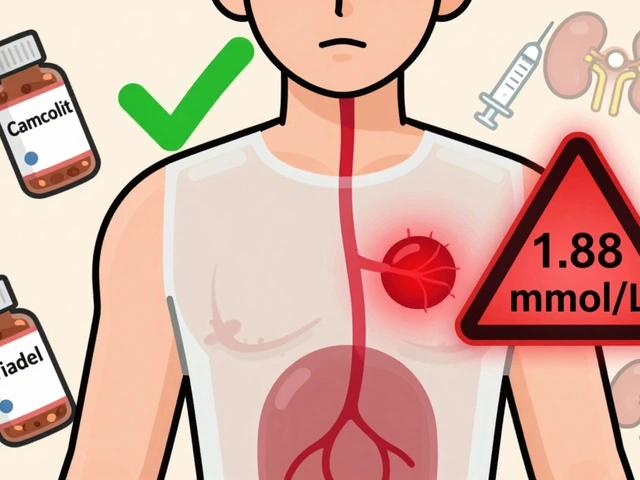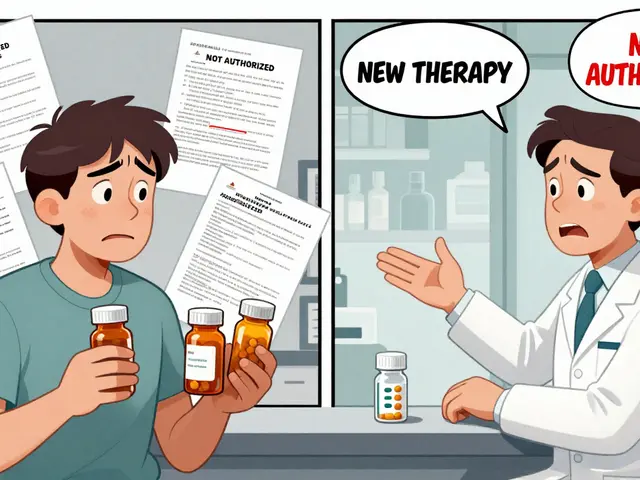Hormone Replacement: What You Need to Know Before Starting HRT
Hormone replacement can feel like a shortcut back to normal — more energy, better sleep, less hot flashes or improved libido. But it’s not one-size-fits-all. This quick guide gives plain, practical steps so you can decide with your doctor and avoid common mistakes.
First, know the main types. For women, HRT usually means estrogen alone or estrogen plus progesterone to treat menopause symptoms and protect bone health. For men, testosterone replacement treats low-T symptoms like fatigue, low sex drive, and muscle loss. Delivery methods matter: pills, patches, gels, creams, and injections all release hormones differently and carry different risks.
Real benefits — and real risks
HRT can reduce hot flashes, night sweats, vaginal dryness, mood swings, and bone fractures. Testosterone can improve energy and sexual function for men with proven low levels. But hormones also raise risks in some people. Estrogen can increase clot and stroke risk in certain women, and long-term combined HRT may slightly raise breast cancer risk. Testosterone can change red blood cell counts and affect the prostate. That’s why you need tests and follow-up — not just a pill handed over.
How to start HRT more safely
1) Get the right tests. Baseline bloodwork should include hormone levels, liver function, lipids, and for women, an up-to-date mammogram if age-appropriate. For men, check baseline PSA and hematocrit.
2) Match dose and delivery to your goals. Low-dose patches or vaginal estrogens often treat local symptoms with lower systemic exposure. Men may start with a conservative testosterone dose and adjust after labs. Always choose the simplest option that meets your goals.
3) Review your medical history. Personal or family blood clots, breast cancer, uncontrolled high blood pressure, or recent stroke typically change the plan. Share every medication you take — some drugs change hormone levels or raise side effects.
4) Plan follow-up. Recheck labs 6–12 weeks after starting or changing dose, then every 6–12 months. Monitor symptoms, side effects, blood pressure, and any unusual signs like severe headaches or leg pain.
5) Think about sources and costs. If you buy hormones online, use licensed pharmacies and check reviews, credentials, and return policies. Avoid unverified compounding shops claiming miracle "bioidentical" cures — they can be inconsistent in dose and purity.
Alternatives exist: lifestyle changes, non-hormonal medications for hot flashes, pelvic moisturizers, and bone-strengthening steps like weight-bearing exercise and calcium/vitamin D. For sexual function, counseling and some non-hormonal meds can help too.
If you’re on the fence, start the conversation with a clinician who knows hormone care. Ask for clear goals, expected timeline, risks specific to you, and a monitoring plan. Hormone replacement can work well — when it’s personalized, monitored, and chosen for the right reasons.

Exploring Effective Alternatives to Synthroid for Thyroid Balance
Synthroid is a commonly prescribed medication for hypothyroidism, but it might not work for everyone. This article explores nine viable alternatives for thyroid management, each with its unique advantages and disadvantages. From natural desiccated options like Armour Thyroid to synthetic choices such as Cytomel, readers can find information helpful for navigating their treatment options. It also includes insights into various FDA-approved levothyroxine variations and naturals that provide both T4 and T3 hormones.
View More




